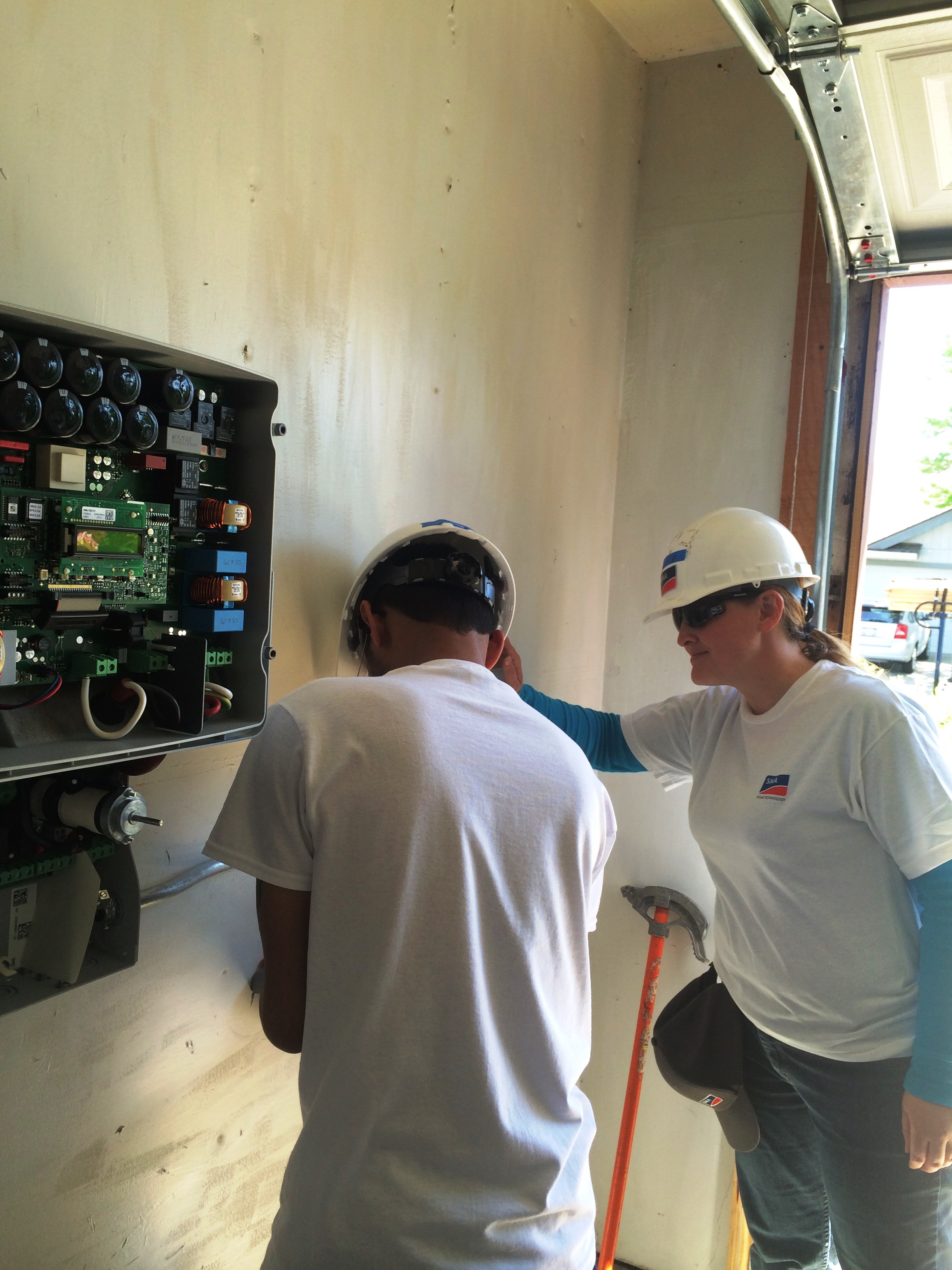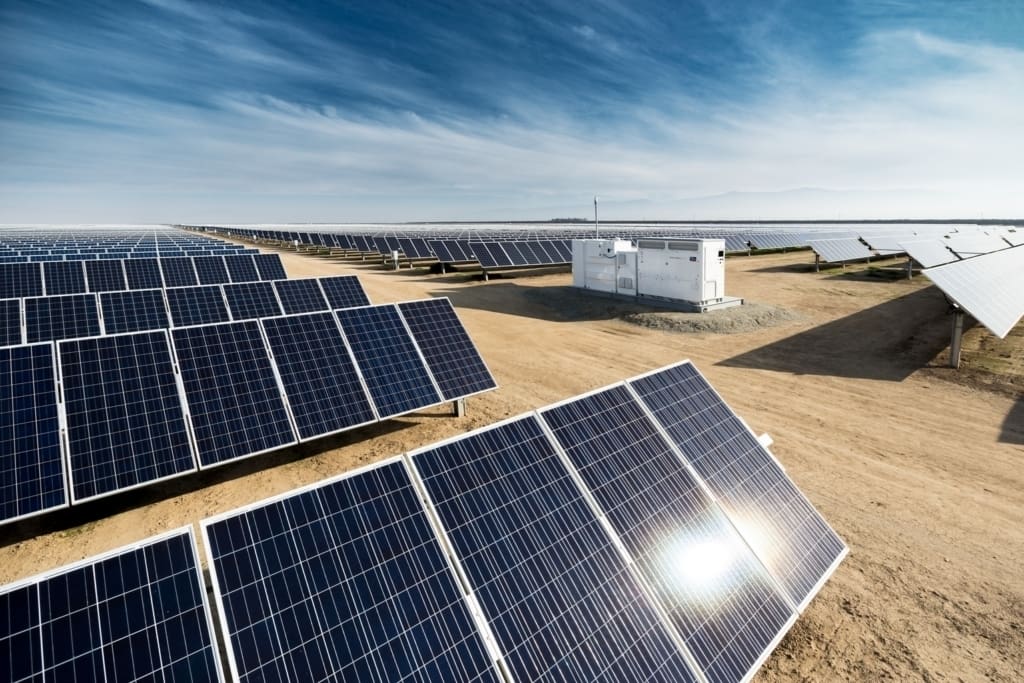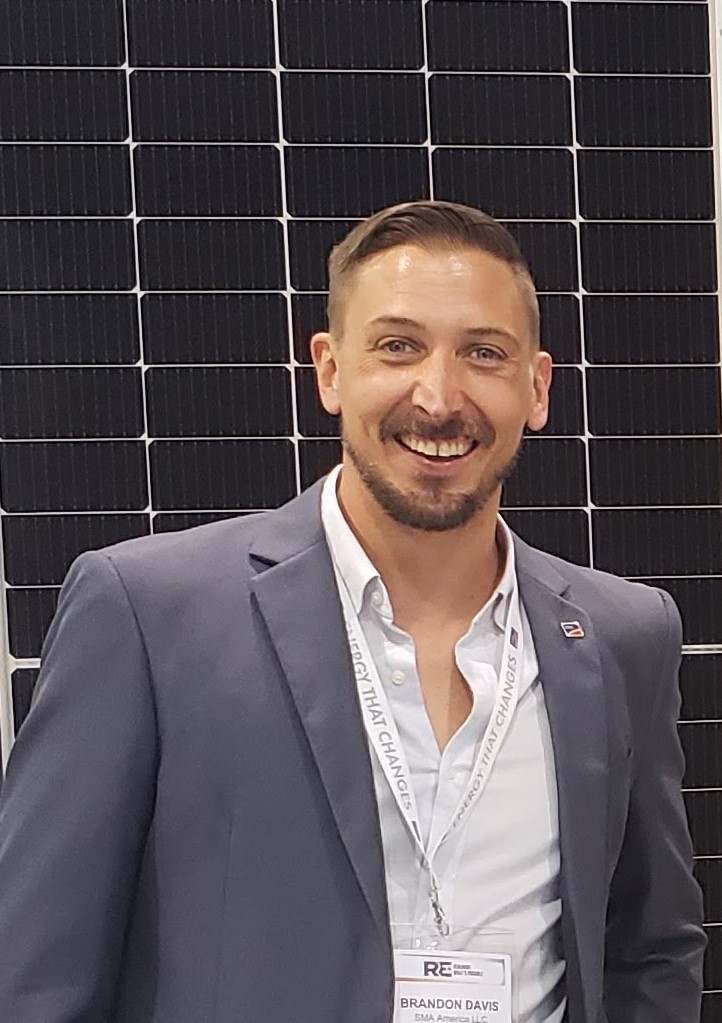Calculating Max PV Voltage is Not Scary

In 2008, the National Electrical Code (NEC) added a second paragraph to 690.7(A) stating, “When open-circuit voltage temperature coefficients are supplied in the instructions for listed PV modules, they shall be used to calculate the maximum PV system voltage as required by 110.3(B) instead of using Table 690.7.” This addition was made because Table 690.7 is very conservative and the temperature coefficient will provide a more accurate voltage increase.
Listed below is the maximum voltage calculation with open-circuit voltage temperature coefficients. As daunting as it may seem it’s quite easy once you’ve done it a few times. Let’s take a look at how it works:
Inverter maximum input voltage with the temperature coefficient percentage of the VOC calculation:
(STC temp – low temp) x temp coefficient % VOC x VOC + VOC = VMax
Inverter max voltage / VMax = Maximum modules per series string
For example:
Record-low temperature: -10ºC
Temperature coefficient of (VOC): – (0.30) %/ºC
Module open circuit voltage (VOC): 39.4 V
Inverter maximum input voltage: 600V
The STC temperature is 25ºC. This temperature needs to be deducted from the array location’s record-low temperature of -10 degrees as follows:
25 – (-10) = 35º difference.
Multiply the 35º difference by the temperature coefficient of VOC (I’ve used the positive value for an easier calculation, though you get the same result) then multiply by the module’s VOC:
35 x 0.0030 = 0.105
0.105 x 39.4V = 4.137V
This is how many volts each module will increase due to record-low temperatures. Add the voltage increase to the Module VOC. Then divide the inverter maximum input voltage by that number. This will give you the maximum number of modules that can be wired in a series string per that inverter and specific location.
4.137 V + 39.4V = 43.537 VMax
600V / 43.537 = 13.7 (round down to a whole number)
The maximum number of modules in this series string is 13. A series string of 14 could potentially produce more than 600V during record-low temperatures.
Lastly, the quantity of modules wired in series multiplied by the VMax equals your maximum system voltage.
13 x 43.54 V = 566 Maximum System Voltage
Voilà, we’ve determined the max PV voltage for our example system and are able to ensure a proper system design without fear of over-voltage for the inverter.





Such a great article i have read… this is a amazing blog… thank you for sharing this blog with us..
I want to install a inverter with Specifications below.
Maximum DC Input Power (PV) = 6500 W
PV Input Voltage = 100V-500V
MPPT =1+1
MPPT Voltage Range = 125-425V
DC Full Load Volatege Range = 240-425V
PV Input Current = 11A + 11A
Solar Panels with
430 W, Voc = 48.53 V, Plates = ?
445 W, Voc = 48.53 V, Plates = ?
How many Plates we can install ?
Hi all, I am wondering if anyone can help, my inverter says max dc input 600 volts it has two strings, is 600volts per string or for both strings?
Thanks
James
I have a 2 off mercer 5000w 5000kva inverter conected to get 1000w, the Open circut voltage max is 145 max mppt is 4000w
420 Canadian panels open circut voltage is 53.5 each
Question what’s the max panals I can use on each line and what’s the best way to connect them up safely to maximize
Hi ..
Thanks for these valuable information and discussion.
I noticed that some local PV designers use a kind of practical formula for sizing their PV string. They say that the max. allowable string voltage should not exceed 75% of the max. mppt voltage of the inverter. Does this makes sense in terms of professional design?
Thanks ..
I have 50 KW sunny island SMA inverter … so what is the maximum number of modules will be in string ?
Please let me know inverter overloading Formula, as as sma trip power 25000-30000,25kw inverter can take up dc to 30kw, how we can overload inverter to maximum
Say a system was configured with module max VOC at record low at 72.4V and somebody hooked up 9 per string to a SMA7.7 . So Max system Voltage could reach 651V. How would the inverter react? Not start up? showing error code and starting up when voltage drops below 600? Does it even see the VOC? After all it is not an open voltage and the max VMPPT is 61V per module.
In other words, how are SMA Sunnyboy inverters protected against over voltage?
What is the formula to calculate string fuse size in in a system with 4 panels in series ( 4 x Strings ) connected to a PV string group combiner proir to Inverter, Panels used 270w Q cells BFR-G4.1
Panel Specs ( STC ) Isc = 9.29 Voc = 38.46 Temp Co-efficient = -0.29
Cheers
This calculation based on minimum temperatue if temperature then voltage will increase above 600v is is this possible? I mean why we considered minimum voltage for finding no of modules!!?
what will be the formula to calculate Vmpp for the 4 PV array connected in series …so that this data we can use it for the training ? can anyone help me for this?
Hi Alejandro, NEC 690.7 indicates that we would have to take account for our design lowest ambient temperature. Should we take into account the minimum temperatures without solar radiation?
hey guys,
I have One question. I practically installed the solar system and observed one thing. In a string of 15 modules with Vmp=36.56V I should get total maximum voltage of 548.4V approx as they all connected in series. But here I was getting total voltage of 680V or 690V. I have checked several times but answer was same. But I don’t know the reason behind this. Please explain me if anyone can.
I have sunny Boy 5000 US, with two strings, at diffrient voltages,486VDC, and 27 VDC. Question is, can I connect to the inverter, this way. Need the extra power, for the grid offset.
hello help me on this one I have a 3kva 48vdc inverter charger its written max pv array 145vdc . is it possible to connect 3 solar panels 325w with voc of 45.5v in series.the panels vop is 37v inverter’s operating voltage is 60-115 v
It will work fine.The 145 v is what the inverter can tolerate when its switched on it will bring down the voltage to the working range.it is a range that will allow the inverter to give you an out put
Dear All!
I have a question about the Voc calculation. According to the results from the equation in the article I get much lover Voc values than the results in the Sunny Design Web calculates!
Does Sunny Design Web use this formula too?
Thank you!
Attila
Dear
some invertor has a datasheet with VAC instead of DC. how we can find Inverter maximum input voltage.
thank you
regards
Noman
Hi Mr. Mike,
The ambient temperature in Aswan, Egypt, at 9:00 AM is 5 C. The open circuit voltage of the solar panel is 47.2, while the voltage temperature coefficient is -0.31% V/C. What is the maximum open circuit voltage considering the temperature effect?
Thanks for this explanation, I do have a question though. Standard Test Conditions specify the PV cell temperature to be 25 degC. Are you suggesting that the record low ambient temperature should be subtracted from the STC cell temperature of 25 degC? This doesn’t sound right, because if we take the case where ambient temperature is 25 degC, that would give 0 degC difference and hence no voltage drop or rise. However, in reality due to the PV cell self-heating while generating, when the ambient temperature is 25 degC, the cell temperature will surely be greater than 25 degC, hence resulting in a decrease of Voc.
Therefore, shouldn’t we subtracting the cell temperature at the current conditions from the STC cell temperature of 25 degC?
Thanks,
Aris
Hey
what about calculating the minimum value for Vmp ?, in high temperature conditions the string may not attain minimum input voltage for the inverter , Do we use the same coefficient we used for Voc?
thanks
Thanks for these information
But if i always do my calculations at max voltage 600 v
Why data sheet include other max voltage 1000v
And other 800 v fir mppt??
And for inverters that have two ports what does mean by current for each port as example
33A for port A and 11A for B
Just wanted to point something out if you don’t mind. I was searching for the max Voc formula to refresh my memory since it had been a while since I had to use it. So I stumbled upon this since it was first on google (nice!) and I’ve installed your products before. Which I must say are a very high quality string inverter. But I must ask while I’m here, did you guys discontinue the the 600vdc Combi disconnect switch?
Sorry. Now to my point. I was a bit confused at first but quickly realized that although you did get the correct answer in your example, the formula is actually incorrect. It should start with (low temp-STC Temp) instead of the other way around. If you hadn’t dropped the negative and actually followed through with the math on your formula correctly, then your voltage adjustment would have been a negative 4.137v and therefore resulting in a max Voc of 35.03v. That would make me think I could string 17 modules in series for this inverter. But in reality, 17 modules in series at -10 would actually be 740.18Vdc. I dont think the inverter would think that.
I just wanted to point that out to be corrected so someone new to PV doesn’t just write down the formula and later go to design strings incorrectly. The main take away for anyone reading this, is that your number should always go up when temperature goes down. And in most cases its in the ballpark of a 3v-5v increase of the module Voc.
One additional note for others out there. You can always skip the formula and look up table 690.7 which would give you a correction factor of 1.14 for -10C. So 39.4Voc x 1.14= 44.916Voc. This is easier but as you can see the number is a little higher because the NEC is a little more conservative but you are allowed to use the formula if the module manufacturer does indeed provide the temperate coefficient. The NEC answer still ends up with 13 in series, but with I have ran a comparison on modules with lower coefficients and the NEC is usually one module less and therefore your design may not be as efficient this way.
I apologize if I sounded like a ‘know it all’ but I am not. I know I still have a great deal to learn in life. I just really love what I do and I really love talking about it. Cheers.
What is the maximum voltage shock when someone get in contact with electricity
thnx for ur declartion ..
but i have two quistions :
the first is:
most of inverters assign the range of mppt voltage between (250 to 450 Vdc).. so if i connect a series of modules which produces a 550 Vdc .. will this (550-450 = 100 Vdc) be lost ?
i see most of calculations depends on max voltage of inverter and ignors the mppt range .. shouldn’t i have to rely on mppt range? if answer is no .. so how can i benefit from this mppt range ? what is the goal of it !!
second quistion is .. how can i calculate the maximum number of strings in parallel !!
i mean ,, if i have a 5 kva inverter .. (its solar charger 3KW) .. how can i calculate the max pv arrays nomber !!
thnx
Great concise explanation about calculating Max PV Voltage for string sizing. Also, thanks for helping me a while back with our 6kW Sunny Boy Inverter system at our farm. We currently have the largest PV array on the Southern Illinois Electric Cooperative grid and the only install back feeding more than we consume 10 of the 12 months of each year.
Now, help me connect a Sunny Island to this system with your next article!